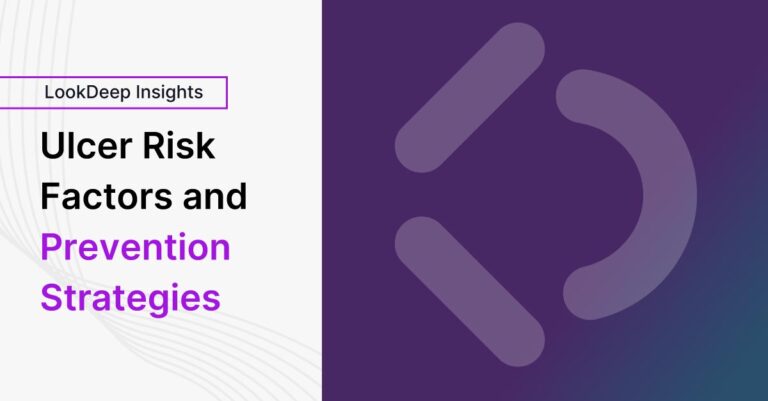Closing the monitoring gap for pressure ulcer prevention
It is an unfortunate fact that unsafe things happen in hospitals. An incorrect medication dosage could be given. A central line can get infected. The hospital environment and complex clinical workflows conspire with the patient’s acute illness to create risk. Falls are clear example. An older adult may be at low risk for falling at home, but the same adult with pneumonia and delirium admitted for IV antibiotics and oxygen has a many-fold increased risk of falling in the hospital. The interplay between illness and care environment creates a need for monitoring that is, at times, challenging to meet using traditional approaches. In a very real way, the risks of being in the hospital are balanced against the benefits of the treatment received.
A compelling example of the monitoring gap can be found in pressure ulcer prevention. Pressure ulcers that develop in the hospital are also called hospital-acquired pressure injury, sometimes abbreviated as HAPI. This injury is a major cause of preventable morbidity and mortality. It also represent a major cost to hospital, and exposes them to significant medico-legal risk. We believe that AI-powered computer vision patient monitoring can help prevent pressure ulcers in the hospital. But, before talking about the monitoring gap, let’s talk a little more about the causes and risk factors for pressure ulcers that drive prevention strategies.
Pressure ulcer risk factors and prevention strategies
The cause of pressure ulcers is straightforward enough: skin and underlying tissue over a bony prominence can get injured by pressure associated with prolonged rest and inactivity such as laying in a hospital bed. Once tissue damage occurs, the extent of tissue damage from a pressure ulcer is defined by four stages.
-
- Stage 1: Non-blanchable erythema of intact skin
-
- Stage 2: Partial-thickness skin loss with exposed dermis
-
- Stage 3: Full-thickness skin loss
-
- Stage 4: Full-thickness skin and tissue loss, with exposed muscle, bone, or tendon
Risk factors for hospital-acquired pressure injuries include age, immobility, incontinence, poor nutrition, and certain medical conditions such as diabetes and peripheral vascular disease. While many of the risk factors are unmodifiable during the hospitalization, there are many things that the care team can do to 1) reduce the risk of a pressure ulcer forming and 2) if one forms, to prevent ulcer progression to more advanced stages.
Prevention strategies follow from the factors that cause pressure injury and include:
-
- Regularly assessing patients for pressure ulcer risk factors
-
- Repositioning patients at regular intervals to relieve pressure on bony prominences
-
- Using specialized support surfaces, such as pressure-relieving mattresses and wheelchair cushions
-
- Keeping patients clean and dry, particularly incontinence management
-
- Encouraging good nutrition and hydration
-
- Providing education to patients, families, and staff on pressure ulcer prevention and management.
Improved monitoring for patients at-risk for pressure ulcers
The prevention approaches seem straightforward, so what are the gaps in monitoring that can be closed to more effectively prevent HAPI? We have identified three that can be addressed through AI computer vision: monitoring patient movement, monitoring body activity patterns, and monitoring staff attention paid to at-risk patients.
Monitoring patient movement
Movement is key to preventing pressure injury. Right now, there is no way to routinely and continuously monitor patient movement. Wearables have some potential but are challenging to scale and may not be tolerated by patients. AI-powered computer vision, on the other hand, can unobtrusively monitor patient motion and give activity metrics similar to wearable actigraphy. These activity metrics can be graphically displayed in a variety of ways. They also can be used to augment HAPI risk prediction and assist with determining which patients may need additional assistance with moving.
Monitoring body activity patterns
Body activity patterns also are important for preventing pressure injury, especially because specific parts of the body are more susceptible than others. Unfortunately, these patterns are not collected at all. AI-powered computer vision can capture whole body motion of patients in bed through motion “heat maps.” Video summaries highlight peak periods of activity over specific hour-long intervals and direct attention to susceptible areas that may require more activity/movement.

Putting it together – new data for new impact
We envisions a few different paths to impact using the monitoring data. Motion data can be use to prioritize patients who are inactive, thus increasing their risk. The data can be used alongside other risk metrics for more precise risk stratification models. If there is activity monitoring in every patient room, patients who are immobile during hospitalization but fly under the radar of the traditional risk screening questions can be appropriately flagged as higher risk.
Overall, the data has the potential to improve both primary prevention as well as progression to Stage III and IV. Stage III and IV are noteworthy because it they count as a reportable “never event” by CMS with the attendant financial consequences.
Tech assist for geting to no harm
As always, the guiding principle in healthcare remains “first, do no harm.” AI-powered computer vision patient monitoring has the potential to significantly reduce the incidence of hospital-acquired pressure injuries. By addressing the monitoring gaps of patient movement, body activity patterns, and staff attention, we can better identify those at risk and more effectively prevent these injuries.

